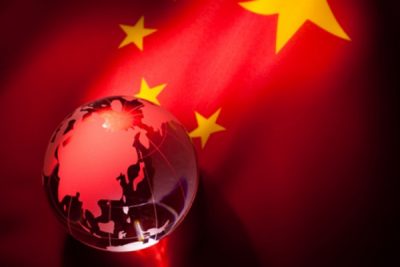China’s Economy Not as Strong as Beijing Proclaims or the West Fears

All Global Research articles can be read in 51 languages by activating the “Translate Website” drop down menu on the top banner of our home page (Desktop version).
To receive Global Research’s Daily Newsletter (selected articles), click here.
Visit and follow us on Instagram at @globalresearch_crg.
***
The temptation to be flippantly Wildean and evoke the spirit of Oscar is sometimes too tempting for the mortal flesh. For the United States to lose China once is unfortunate; to lose it twice smacks of carelessness. The second time round, it is important not to over exaggerate. China is a powerful country and its transformation over the last four decades has been astonishing. And of course, flippancy aside, China was never anyone’s to lose. But the country is not as powerful as those in power portray it or as those in the West, desperately seeking a new bogey man to boost defense spending, would suggest. Debt is the iceberg waiting to shred any over-confidently navigated economy’s hull. China is no longer going full steam ahead but it is in treacherous, icy waters. Evergrande? Let’s put this in perspective. The construction conglomerate has a debt of about $300 billion.
Local government debt in China at the start of November was about $4.7 trillion, approx $3,300 for every Chinese citizen.
Then there is the debt of what are called local government financing vehicles (unregulated bodies set up to provide non-bank and non-traceable lending). This is estimated to have risen to about $8 trillion at the end of last year, much bigger than the official outstanding government debt.
Much of China’s public finances are shrouded from public scrutiny, especially these vehicles. There is no official data on this debt.
One item rarely measured when estimating gross domestic product is re-inforced steel bars. Yet it can be argued that the market for these is an important measure of economic performance. These bars are meshed in foundations and play a crucial role in reinforcing a building’s structure. In short, no reinforcement bars, no construction. They are falling in price in China and have been for months.
The construction sector represents a quarter of the Chinese economy. About 140 square feet of new housing for every urban resident has been built in the past two decades.
The one-child policy has been scrapped but birth rates have not recovered as couples, legally obliged to look after their parents, reject placing themselves under any further financial strain.
From 2011 to 2020, census data showed stagnating population growth. In 2021, it fell to 12 million, the lowest since the country tackled fallout from the Great Chinese Famine 1959 to 1961.
Civil servants, and China places them on a pedestal as the epitome of a successful life, are experiencing or facing pay cuts. The base salary for civil servants is low – even top-ranking ministerial officials earn less than $1,400 a month.
Beijing realizes the value of its civil servants. Slashing their salary will not have been an easy decision.
Another key indicator is electricity output.
Year-on-year power demand growth for 2022 will be lower than what it was for 2021, analysts predict.
Of course, all these figures have been impacted by COVID-19. But there is no disputing that these key indicators, to put it mildly and to differing degrees, reflect challenges. It is important to stress that this does not mean that China’s economy is facing imminent collapse.
But neither can they be discounted, especially local government debt.
Slowing growth, slackening demand and debt at record levels, Xi Jinping is facing challenges not seen since Deng Xiaoping began lifting the country out of its Maoist straitjacket in 1980.
Unlike then, this is not a country in isolation. China was not just the main locomotive of global growth in the last few years, it laid the tracks.
The massive and generous economic stimulus that the government implemented in response to the 2008 financial crisis kept the global economy afloat. It is one of the great ironies that this stimulus helped stabilize the West’s finances by keeping the order books open but it destabilized China’s by rewarding inefficient companies.
Its debt-to-GDP ratio of 159 percent is significantly higher than the global rate of 101 percent and almost twice the 85 percent of the US.
The annual two sessions in March, (the meeting of the parliament and advisory body) will discuss issues of the day. But the big one, in October or November (not decided yet) when the quinquennial party congress convenes, will endorse Xi as lifetime leader and examine long-term policy. A slowing economy should herald a less belligerent foreign policy as new markets are searched for. But diplomacy has not exactly been a hallmark of Xi’s presidency and will be even less so once he establishes lifetime tenure in office.
Icebergs are easy to spot but the real danger is what lies beneath. The Chinese economy still needs to navigate with caution.
*
Note to readers: Please click the share buttons above or below. Follow us on Instagram, @globalresearch_crg. Forward this article to your email lists. Crosspost on your blog site, internet forums. etc.
Geopolitical analyst Tom Clifford reporting from Beijing. He is a regular contributor to Global Research.

